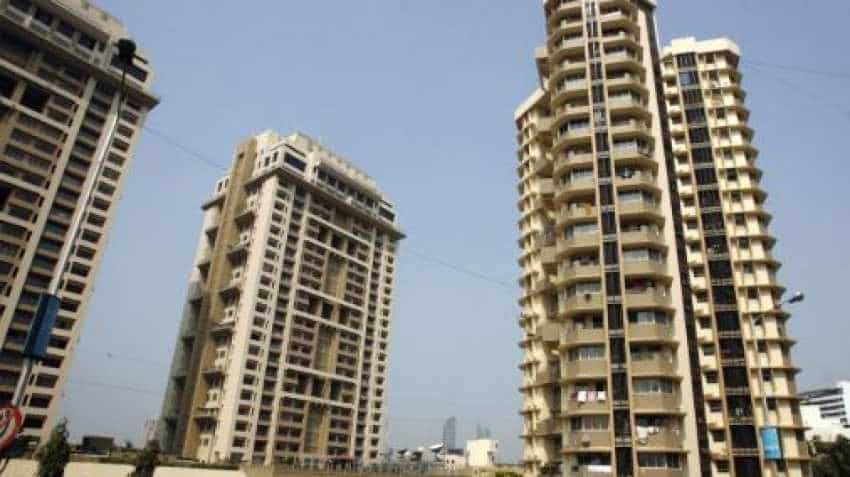Growth in home loans higher in non-metros: JLL
The share of four metro cities -- Delhi, Mumbai, Kolkata and Chennai -- in outstanding home loans dropped to 16 per cent in 2017-18 from 22 per cent in 2012-13 as growth in loan book was higher in small towns, according to property consultant JLL India.

The share of four metro cities -- Delhi, Mumbai, Kolkata and Chennai -- in outstanding home loans dropped to 16 per cent in 2017-18 from 22 per cent in 2012-13 as growth in loan book was higher in small towns, according to property consultant JLL India. In its latest report, JLL said that Tier II & III cities across 50 districts of the country exhibited higher Compounded Annual Growth Rate (CAGR) of outstanding home loans, ranging from 15-36 per cent during the period between 2012-13 and 2017-18 as against 8-12 per cent observed across districts comprising leading four metros. India's home loan market grew from Rs 4.6 trillion to Rs 9.7 trillion, exhibiting a CAGR of 16 per cent during the period under review, the consultant said based on analysis of RBI home loan data.
"The home loan data demystifies the common perception that districts comprising the top leading cities, Mumbai, Delhi, Chennai and Kolkata, drive residential real estate growth," JLL India CEO and Country Head Ramesh Nair said. The data clearly indicates that with development focus gradually reaching to peripheral regions, tier II and III cities of the country have attracted the homebuyers' interest, he added. "The share of these top four districts to the overall outstanding home loans in the country has dropped to 16 per cent from 22 per cent during the same period. In comparison to this, the share of rest of India has increased to 84 per cent from 78 per cent,? Nair said.
The consultant attributed factors such as improved connectivity, infrastructure growth, better education and health care facilities that supported the growth of peripheral cities. The housing sector has been reaping the benefits of the growth story, it added. Real estate developers in these cities have also been adopting the latest construction and development trends and have been able to provide homes at competitive rates mainly due to lower land and manpower costs, Nair said.
The policy initiatives like the Smart City Mission, development of industrial corridors, the Atal Mission for Rejuvenation and Urban Transformation (AMRUT), metro rail projects, Prime Minister Awas Yojana (Urban) and Make in India, have added value to the overall buying sentiments within these Tier II-III markets, said Samantak Das, Chief Economist and Head of Research, JLL India "The impact of these national-level projects is expected to be long term and will make these cities more attractive destinations for various industries as well as residential real estate. The trend is prominently visible in the peripheral markets of top metro cities," Das added.
Get Latest Business News, Stock Market Updates and Videos; Check your tax outgo through Income Tax Calculator and save money through our Personal Finance coverage. Check Business Breaking News Live on Zee Business Twitter and Facebook. Subscribe on YouTube.
RECOMMENDED STORIES

SBI 444-day FD vs PNB 400-day FD: Here's what general and senior citizens will get in maturity on Rs 3.5 lakh and 7 lakh investments in special FDs?

Small SIP, Big Impact: Rs 1,111 monthly SIP for 40 years, Rs 11,111 for 20 years or Rs 22,222 for 10 years, which do you think works best?

Rs 3,500 Monthly SIP for 35 years vs Rs 35,000 Monthly SIP for 16 Years: Which can give you higher corpus in long term? See calculations

Power of Compounding: How long it will take to build Rs 5 crore corpus with Rs 5,000, Rs 10,000 and Rs 15,000 monthly investments?
10:04 PM IST









 Cabinet approves construction of 2 crore more houses under PM Awaas Yojana
Cabinet approves construction of 2 crore more houses under PM Awaas Yojana  PM Awas Yojana: What it is? How to check names on list? Here's details
PM Awas Yojana: What it is? How to check names on list? Here's details Centre approves 1.12 lakh more houses under Pradhan Mantri Awas Yojana
Centre approves 1.12 lakh more houses under Pradhan Mantri Awas Yojana Demonetisation may lead to lower growth for cement sector, report says
Demonetisation may lead to lower growth for cement sector, report says  Interest Rate Cut: Real estate companies expect more to boost demand for housing
Interest Rate Cut: Real estate companies expect more to boost demand for housing